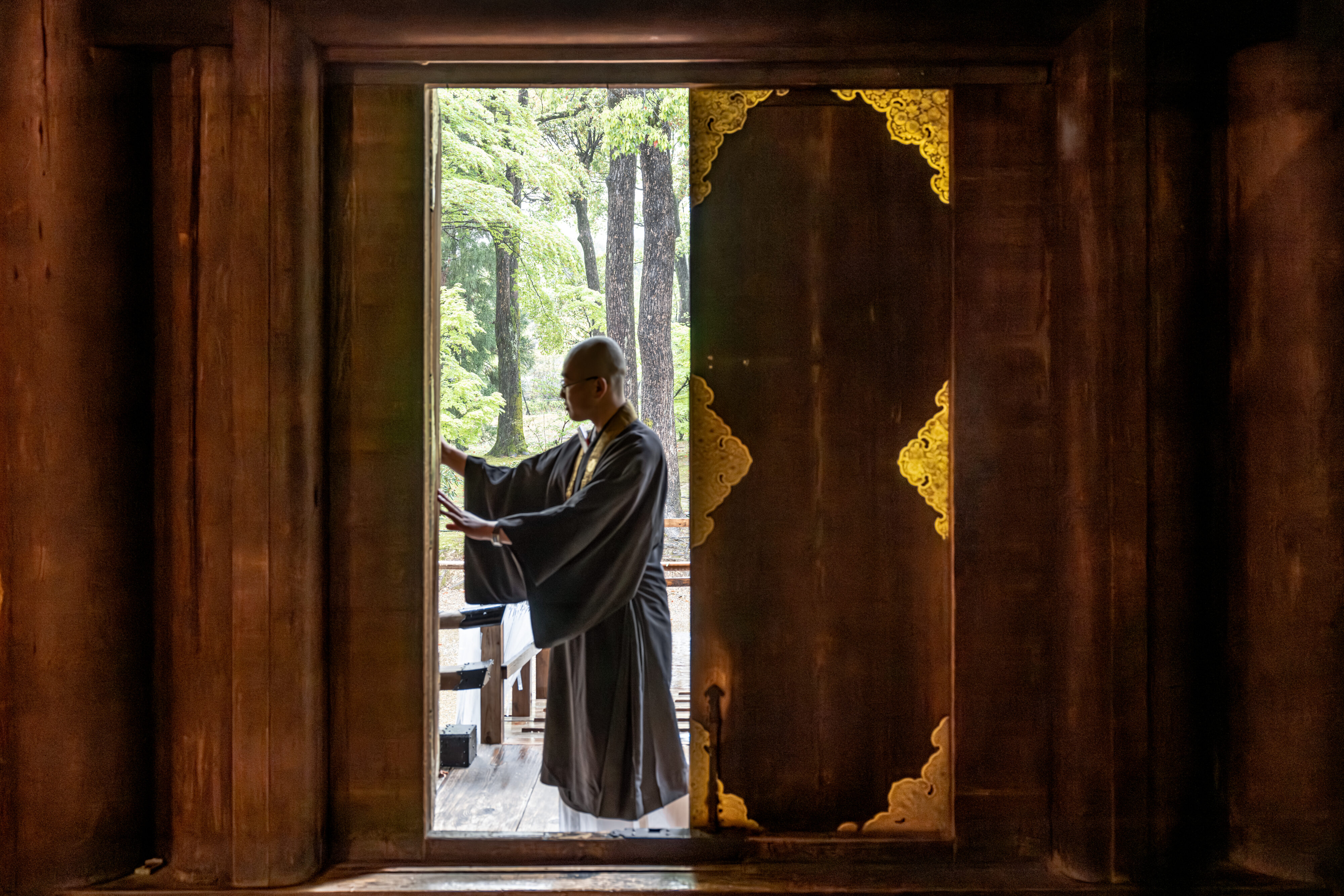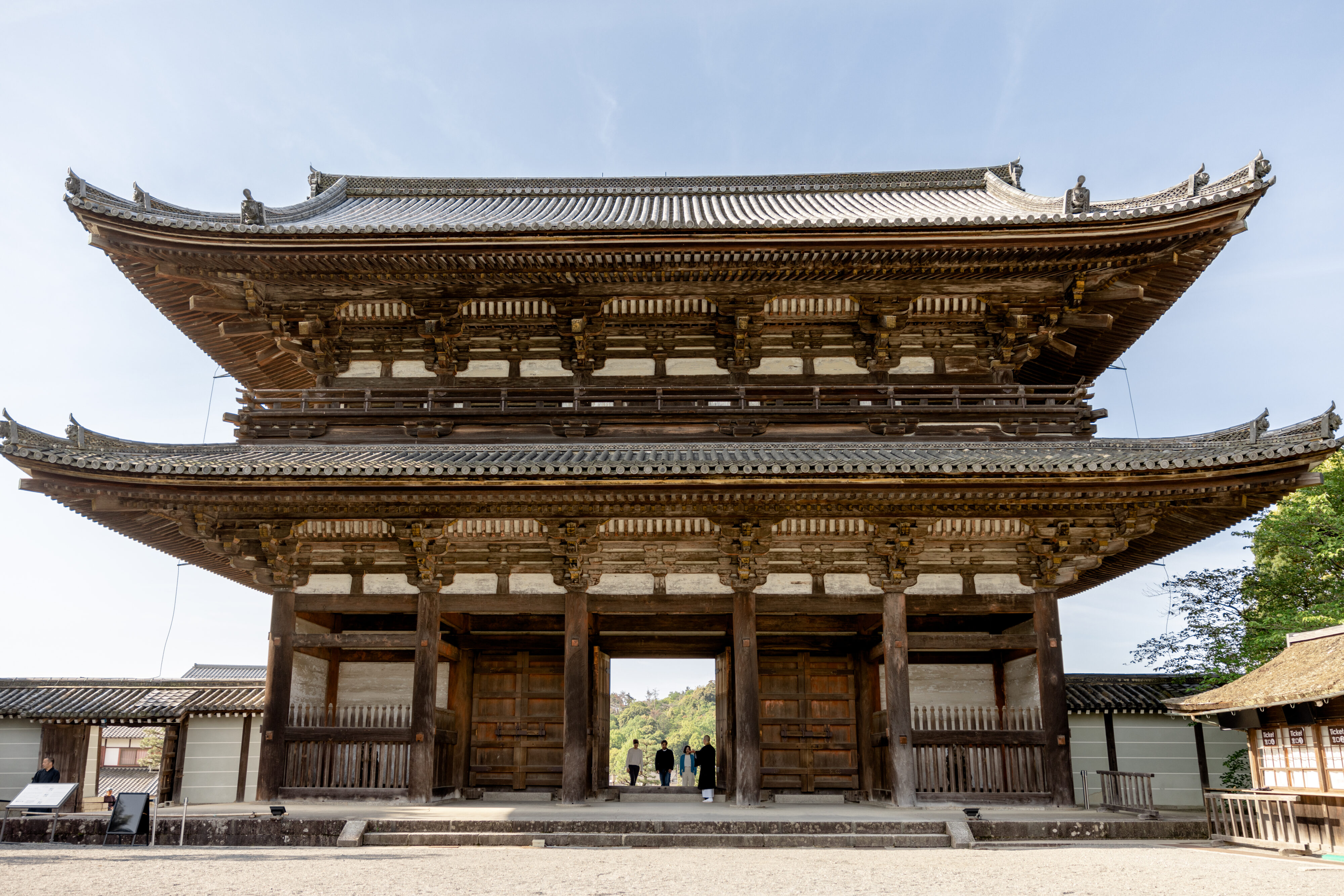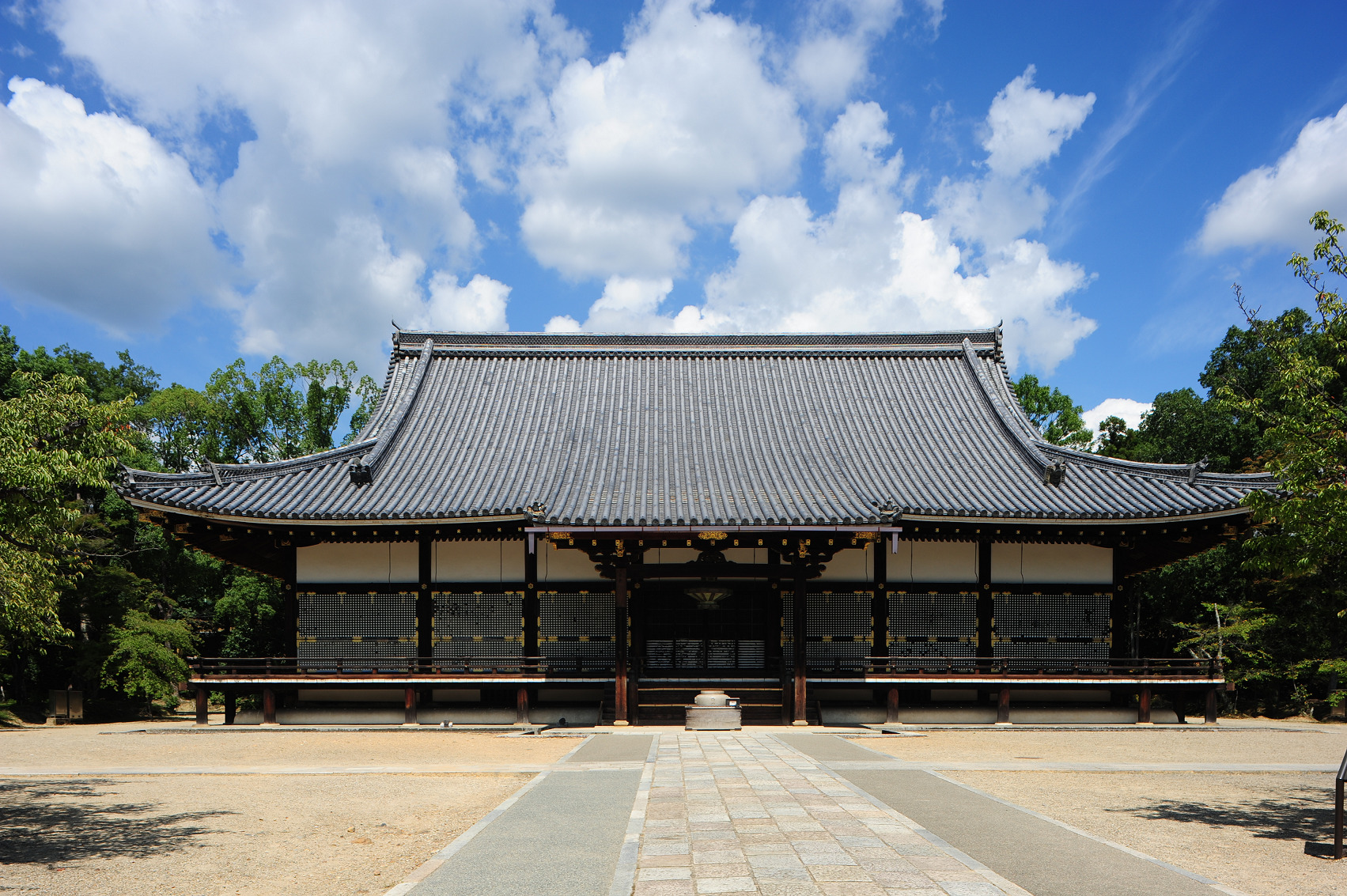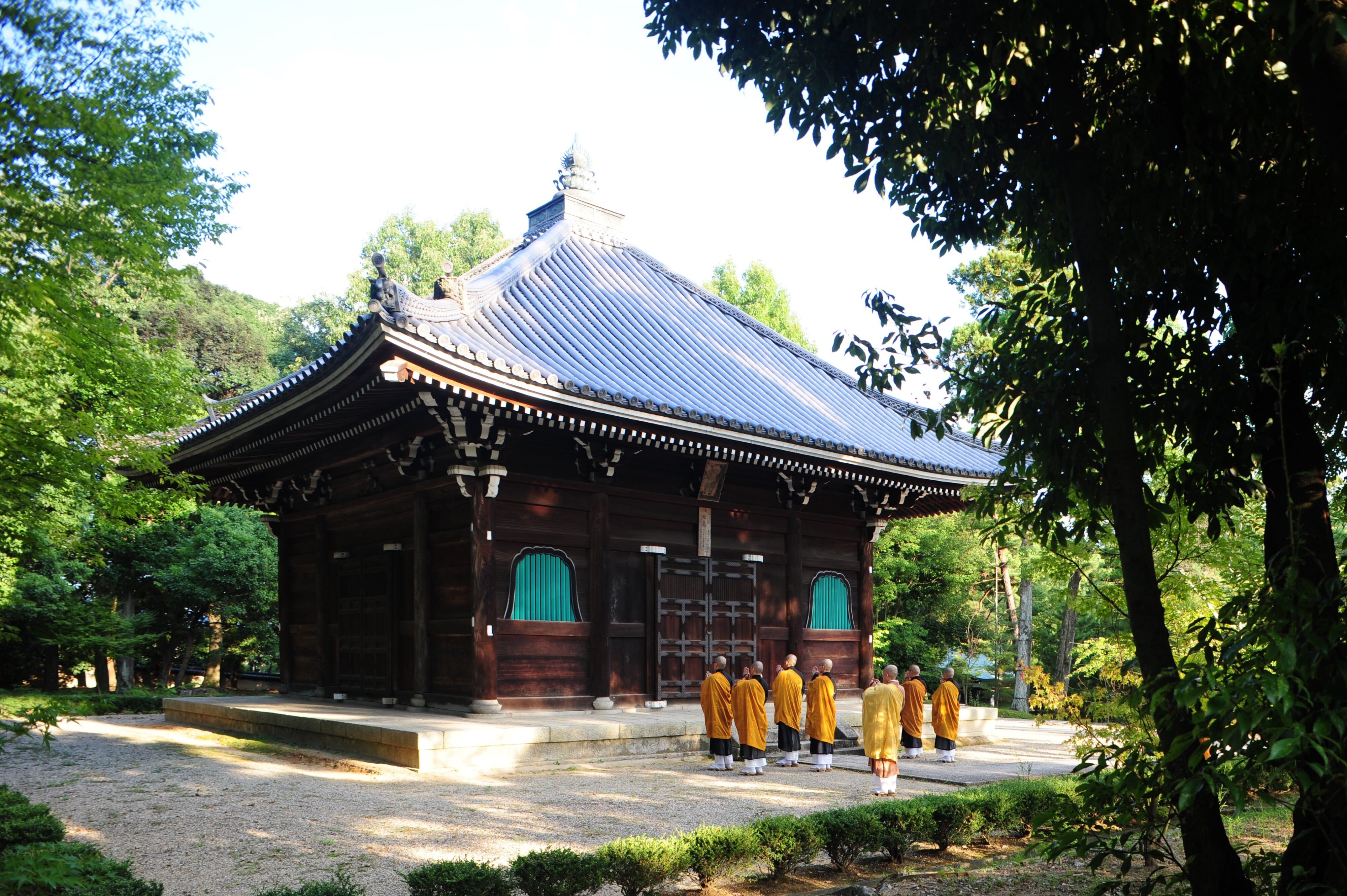







【10/27】総本山仁和寺 特別ツアー
Special Tour at Ninna-ji Temple
世界遺産・仁和寺で、僧侶の案内による非公開エリアの拝観と「写仏」体験
World Heritage Ninna-ji Temple: Guided Tour by a Monk of Exclusive Areas and a Buddha Image Tracing Experience
開催情報
Event Details
開催日時 / Date & Time
2025年10月27日(月) 14:00〜16:00
開催場所 / Venue
総本山 仁和寺(京都市右京区御室大内33)
参加費 / Admission
10,000円(税込)
参加方法 / Registration
WEBサイトから事前にお申込ください
【予約はこちらから】
https://x.gd/vvoeZ
概要
Overview
世界遺産・仁和寺を、僧侶の案内で特別に拝観します。通常非公開の金堂(本堂)や経蔵に足を踏み入れることができる貴重な機会です。
金堂はもともと京都御所の建物であり、仁和寺に移築されたことから、皇室との深いつながりを示しています。経蔵には「輪蔵」と呼ばれる回転式書架に768函・約7,680巻もの経典が収められており、この輪蔵を一周回すことで全ての経典を読誦したのと同じ功徳が得られるとされています。本体験では、通常非公開の経蔵内部に入り、自ら輪蔵を回す特別な体験ができます。
その後は僧侶の指導のもと、仏画を丁寧に写し取る「写仏」を体験。これは写経と同様に心を静め、癒しのひとときをもたらします。最後に、季節の和菓子と選び抜かれたお茶をいただき、静かな心で体験を締めくくります。
A Special Guided Visit to World Heritage Ninna-ji Temple
Join a monk-led special tour of Ninna-ji Temple, a UNESCO World Heritage Site, and gain rare access to areas normally closed to the public, including the Golden Hall (Kondō) and the Sutra Repository (Kyōzō).
Originally part of the Kyoto Imperial Palace, the Golden Hall was relocated to Ninna-ji, symbolizing the temple’s deep historical ties with the Imperial Family. The Sutra Repository houses a rotating sutra shelf called a rinzō, containing 768 cases and approximately 7,680 volumes of Buddhist scriptures. It is believed that turning the rinzō once grants the same merit as reading all the scriptures. In this program, you’ll have the rare opportunity to step inside the repository and personally rotate the rinzō.
Following the tour, under the guidance of a monk, you’ll experience Shabutsu—the meditative practice of tracing a Buddha image. Much like shakyō (sutra copying), it brings peace of mind and a sense of calm reflection.
The experience concludes with seasonal Japanese sweets and carefully selected tea, offering a serene moment to close this spiritual journey.
協力
Special Cooperation
この度の特別ツアー実施にあたり、総本山仁和寺様に多大なるご協力を賜りました。
総本山 仁和寺
真言宗御室派総本山。886年(仁和2)、光孝天皇の勅願により創建、888年(仁和4)に完成。年号を寺名とした。宇多天皇が落髪入寺し寺内に御室(御座所)を設け、御室御所とも呼ばれた。以後、明治維新まで代々皇子皇孫が門跡となり門跡寺院の筆頭にあった。堂塔伽藍は応仁の乱(1467-77)で多くを焼失、寛永・正保年間(1624-48)に再興した。金堂(国宝)は御所紫宸殿を移築。御影堂(重文)も旧清涼殿の材を用いて建立した。霊宝館には、阿弥陀三尊像(国宝)、御室相承記(国宝)、吉祥天立像(重文)など多くの寺宝を所蔵。遅咲きの‘御室桜’は有名で名勝。旧御室御所御殿の御所風たたずまい、豪華な襖絵が見事。1994年(平成6)12月「古都京都の文化財」として、「世界遺産条約」に基づく世界文化遺産に登録された。
We would like to express our deepest gratitude to Ninna-ji Temple, the Head Temple of the Omuro School of Shingon Buddhism, for their generous support in making this special tour possible.
Ninna-ji Temple
Founded in 886 (Ninna 2) by imperial decree of Emperor Kōkō and completed in 888 (Ninna 4), Ninna-ji takes its name from the era in which it was established. When Emperor Uda took Buddhist vows and entered the temple, he built a residence within the grounds known as the Omuro, leading to the temple’s alternate name, Omuro Gosho (“Imperial Residence of Omuro”).
From that time until the Meiji Restoration, members of the imperial family served as head priests, making Ninna-ji the foremost of the monzeki temples. Many of its original buildings were lost during the Ōnin War (1467–1477) but were later reconstructed in the Kan’ei and Shōhō eras (1624–1648).
The Golden Hall (Kondō), now designated a National Treasure, was originally the Shishinden (Hall for State Ceremonies) from the Kyoto Imperial Palace, relocated to the temple. The Miei-dō (Hall of Portraits), an Important Cultural Property, was built using materials from the old Seiryōden.
The temple’s Reihōkan (Treasure Hall) houses many priceless artifacts, including the Amida Triad (National Treasure), Omuro Sōjōki (National Treasure), and Standing Statue of Kisshōten (Important Cultural Property).
Ninna-ji is also famed for its late-blooming Omuro-zakura cherry trees, designated a Place of Scenic Beauty. The temple complex retains the refined atmosphere of an imperial residence, adorned with magnificent fusuma (sliding door) paintings.
In December 1994, Ninna-ji was inscribed as part of the UNESCO World Heritage Site “Historic Monuments of Ancient Kyoto.”